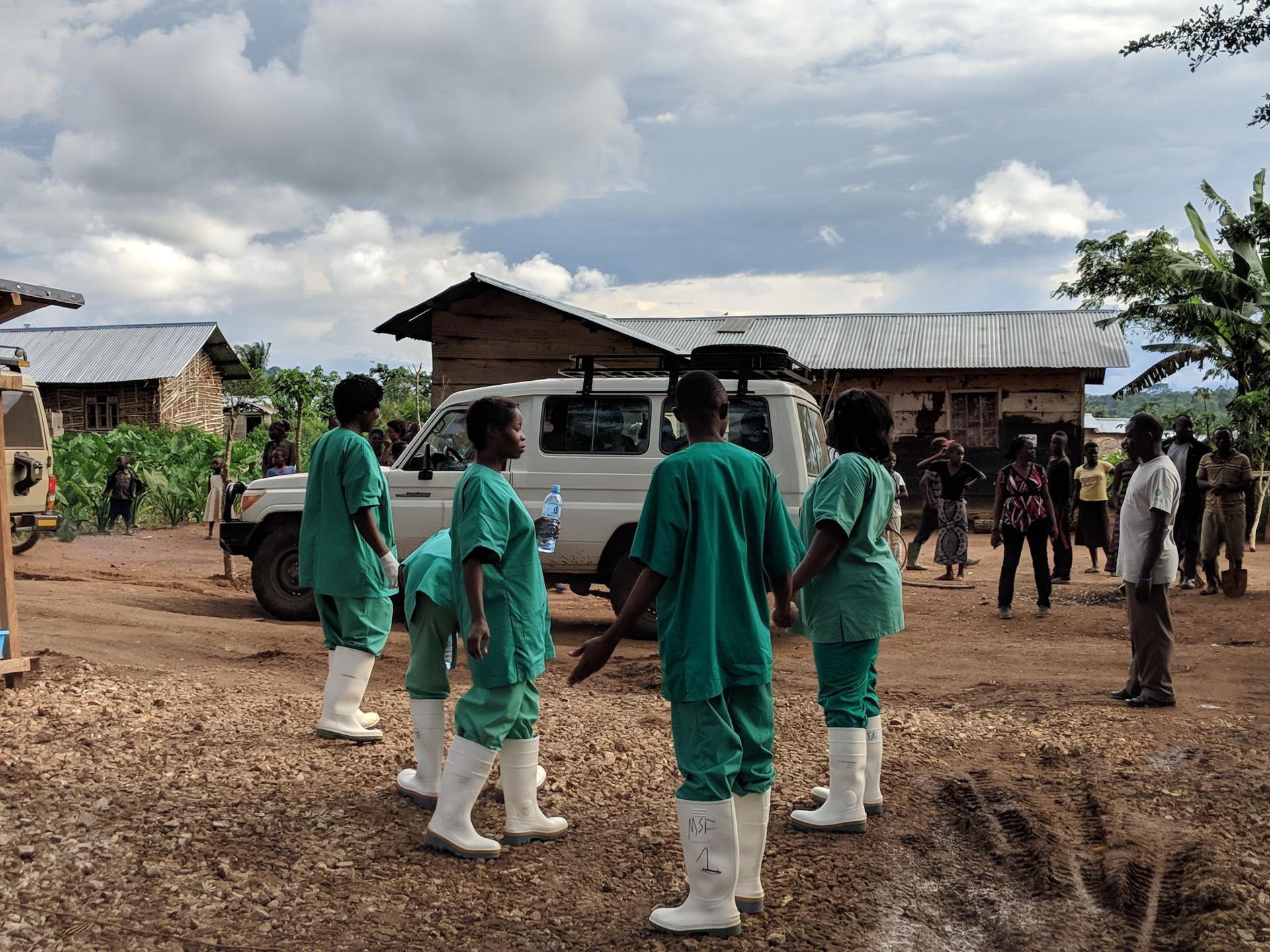Timeline
- 30 July: MSF is informed about suspect cases of Ebola near Beni/Mangina, North Kivu.
- 31 July: an MSF team from the nearby project in Lubero (roughly 3 hours away by car) arrives on site (with the MoH) to investigate;
- 1 August: the Ministry of Health declares an Ebola outbreak in Mangina, North Kivu, north-eastern Democratic Republic of Congo.
- 1-3 August: MSF prepares to respond to the outbreak, within the masterplan of the Ministry of Health.
- 6 August: MSF isolation unit installed in Mangina reference health centre, trainings done on PPE utilisation, triage, infection prevention & control (IPC).
- 7 August: Results of genetic analysis from the national laboratory confirm that the circulating virus is of the Zaire species, but a different strain from the one reported in the Equator outbreak earlier this year.
- 8 August: vaccination of frontline health workers begins under WHO’s supervision (not done by MSF).
- 14 August: MSF’s treatment centre opens in Mangina (in tents 300m from the isolation unit). 37 suspected and confirmed cases are admitted the opening day. Originally designed for 30 beds, its capacity has immediately being extended to 68 beds and can be extended to 74 if needed.
- 14 August: Decontamination of the local health centre in Mangina as well as other health centres with confirmed cases
- 24 August: MSF begins offering therapeutic drugs to eligible patients in the ETC in Mangina
- 28 August: MSF opens a transit centre in Makeke
The Area
Mangina (40 000 inhabitants) is located in North Kivu, in north-eastern Democratic Republic of Congo. Beni, the administrative centre of the area, is 32 km away (45 minutes by car) and is quite a big city, home to approximately 420,000 inhabitants.
The region is densely populated and is an area of conflict with over one hundred armed groups are estimated to be active in North Kivu. Beni has been under military rule for the past few years and moving around some areas in the region is quite difficult and sometimes impossible. Kidnappings and car jackings are relatively common.
North Kivu shares a border with Uganda to the east (Beni to the border is approximately 100 km). This area sees a lot of trade, but also traffic, including “illegal” crossings. Some communities live on both sides of the border meaning that it is quite common for people to cross the border to visit relatives or trade goods at the market on the other side.
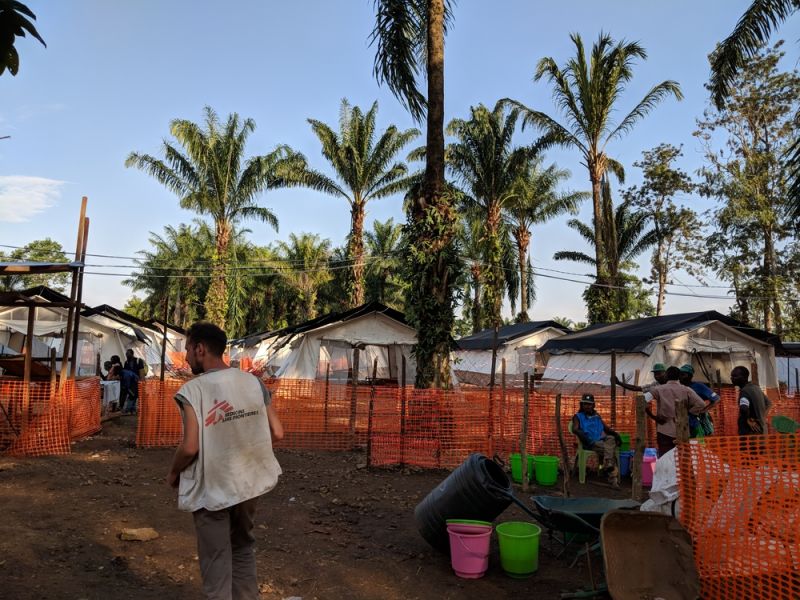
The Outbreak
Total number of cases as per Ministry of Health data on the 03/09/18
- Confirmed (91) + Probable* (30) = 121 total cases
- Suspect cases: 14
- Deaths amongst confirmed cases: 51
- 17 health staff infected
*Probable refers to community deaths that have links to confirmed Ebola cases but which were not tested before burial.
Retrospective investigations point to a likely start of the outbreak back in May. The delay in alert / response can be attributed to several factors, including a breakdown of the surveillance system due to the security context (limitations to movement, difficulty of access). The origin of the outbreak is as yet being investigated however, so we cannot draw solid conclusions.
The initial alert came after a woman from Mangina was admitted to the local health centre on 19 July for a heart condition. She was discharged but died at home on 25 July with symptoms of haemorrhagic fever. Members of her family subsequently developed the same symptoms and a died. A joint Ministry of Health/WHO investigation on site found six more suspect cases, of which four tested positive. This result led to the declaration of the outbreak on 1 August.
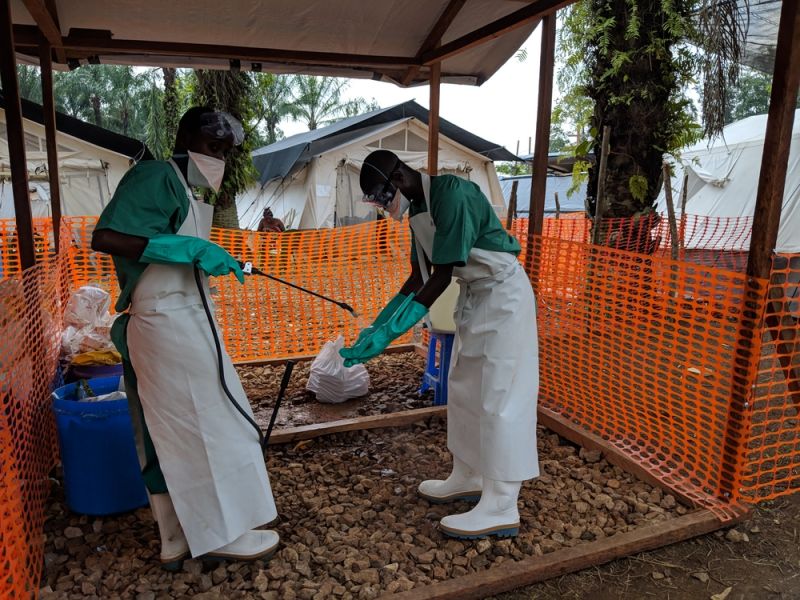
The national laboratory (INRB) confirmed on 7 August that the current outbreak is the Zaire strain on the virus, the most deadly and the same that affected West Africa in 2014-2015 as well as Equateur province, in western DRC earlier in 2018 – although the virus’ strain was different from an outbreak to another.
Four weeks after the declaration of the epidemic, the epidemiological situation in Mangina and the surrounding areas is still concerning (four health zones in North Kivu and Ituri provinces, Mandima, Mabalako, Beni and Oicha) have so far reported confirmed or probable cases of Ebola). Teams are still working on identifying all active chains of transmission. This is not simple given that some cases have occurred in highly insecure areas and cannot easily be followed up with the usual case investigation and contract tracing.
Since the beginning of the outbreak over 4,100 contacts have been identified and more than 2,300 are being followed up by the Congolese Ministry of Health. The contact tracing and follow-up is done by the MoH with a team of epidemiologists.
Whilst cases have decreased dramatically we cannot yet say that the epidemic has stabilized or is under control., New cases are still arriving at our treatment centre in Mangina but we are not seeing the number of suspect cases we would expect to see at this stage of the epidemic. We are concerned that this could be not only because of a reduction in the number of infections but because those patients experiencing symptoms are too afraid to access care or do not understand the importance of early hospitalisation and treatment. We also don’t have a clear idea about how many unreported deaths could happen at community level.
MSF’S ROLE
At the MOH’s request, MSF is part of the task force coordinating the intervention and is focusing on caring for patients affected by the virus as well as protecting local health structures (and their workers) by helping with triage, decontamination and trainings.
In total, 337 staff are currently working in MSF’s Ebola Projects in North Kivu and Ituri.
MSF first improved an isolation unit for suspect and confirmed cases in the Mangina health centre, the epicentre of the outbreak where patients were isolated and cared for whilst a treatment centre was built. A treatment centre opened on 14th August. Teams have been progressively increasing the level of supportive care (oral and IV hydration, treatment for malaria and other coinfections as well as treatment of the symptoms of Ebola) and have also been able to offer new therapeutic treatments to patients with confirmed Ebola infection under the MEURI protocol. These treatments are given only with the informed consent of the patient (or a family member if they are too young or too sick to consent) and are provided in addition to the supportive care.
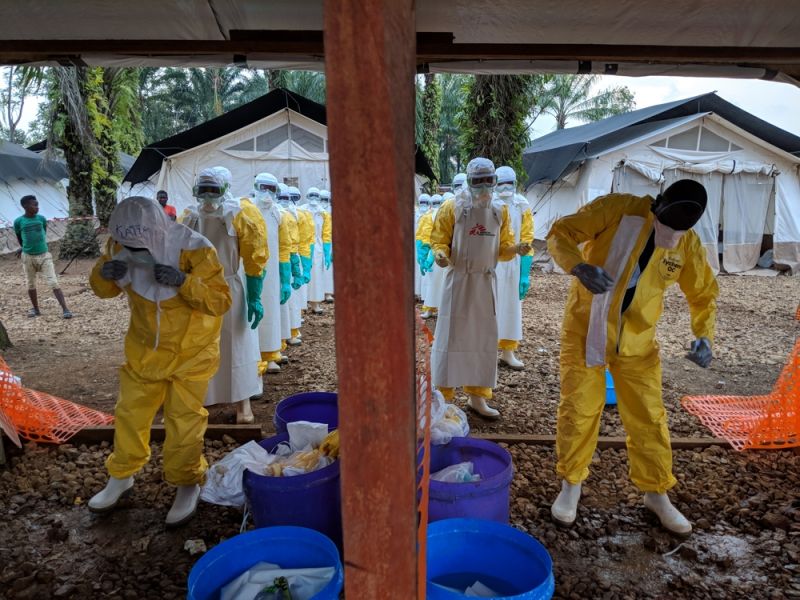
The centre has a capacity of 68 beds and can extend to 74 if required.
As of 5pm on the 3rd of September, MSF had treated 65 patients confirmed to be suffering from Ebola and admitted a total of 124 patients for testing for the virus in Mangina. Of the patients confirmed Ebola positive in Mangina Ebola Treatment Centre, 29 had recovered and returned to their families whilst three confirmed patients and two suspect patients remained under treatment. Another isolation centre was built by MSF in Beni and handed over to the Ministry of Health, who assigned it to another NGO – it is now a treatment centre.
MSF teams also built a 7-bed transit centre in Makeke (on the Nord Kivu Ituri border) where suspect patients can be isolated and tested for the virus. If they test positive, they will be transferred by road to one of the treatment centres either in Mangina or Beni. The transit centre was opened on 28 August. It is hoped that this will help overcome resistance to the Ebola response in the community.
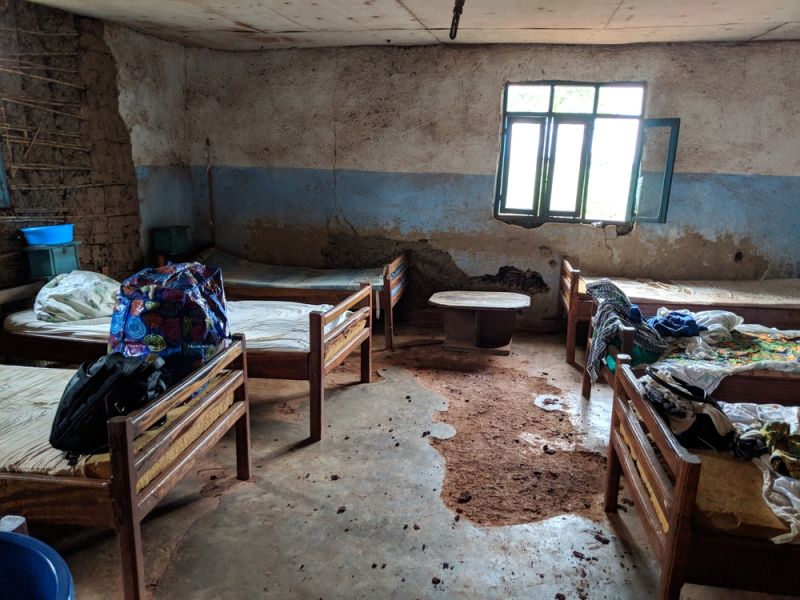
Health centres in Mangina and Beni that have seen positive cases are also being decontaminated. Furthermore, there are MSF teams working in the Beni and Mangina area as well as in Ituri, between Mambasa and Makeke (on the border with North Kivu), visiting health centres and training staff on the proper triage of Ebola suspects as well as setting up isolation areas in case of need.
MSF has recently received authorisation to begin vaccinating frontline workers (health staff, religious leaders, burial workers etc) from Makeke on the Ituri-Nord Kivu border up to Biakato. Given that the population from Mangina move often in this direction, it is hopes that this vaccination will help to stop the infection spreading further into Ituri.
MSF’s teams in Uganda have also been mobilised to be ready in case the outbreak spills over across the border. They have installed an isolation tent in Bwera, a small town directly across the border from Beni and Butembo. MSF regular project in Hoima (Uganda) has also set-up an isolation tent.
MSF presence in eastern DRC
MSF has been operational in NK since 2006. Today, we have regular projects in North Kivu:
- Bambo: ER, paediatrics, nutrition and support 3 health centres.
- Kibirizi: ER, paediatrics, nutrition and support 2 health centres.
- Lubéro: ER, paediatrics, nutrition and support 2 health centres.
- Rutshuru (planned): surgery, ER, paediatric nutrition.
- Goma: HIV support at Virunga Hospital + 5 health centres, Eprep for mass casualty plans, cholera treatment centres.
- Masisi: support regional hospital, health centres and mobile clinics for malaria care
- Mweso: support 12 health centres and the general hospital.
- Walikale: general hospital on pediatric, nutrition, maternity and laboratory services and 4 health centers.
We also have pre-existing projects in nearby provinces:
Ituri:
- Bunia: support to 9 health centres in 2 health zones - primary healthcare and referrals.
- Mambasa: medical care for victims of sexual violence and treatment for sexually-transmitted infections (The regular project in Mambasa is currently on standby, and the teams are supporting the Ebola intervention)
- Adi: healthcare to South Sudanese refugees and local population
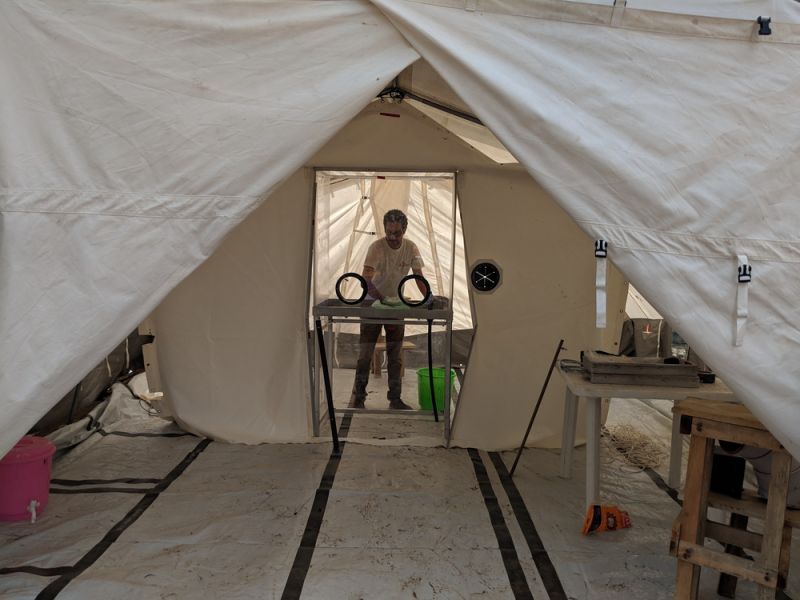
South Kivu:
- Lulingu: post-conflict assistance to both displaced and host communities in the area.
- Kalehe: primary and secondary health care.
- Mulungu-Kaniola: primary and secondary health care, EPI, pediatrics, referrals.
Likewise, all MSF regular projects in the North Kivu and Ituri areas have also been supplied with Ebola equipment including PPE and have put proper hygiene and infection control protocols in place to safeguard staff and patients from the risk of contamination should the epidemic spread further.
Find out more about the Ebola outbreak in the Democratic Republic of Congo here.
Read about the The tenth Ebola outbreak in the DRC here.
Find out more about MSF's activities in the Democratic Republic of Congo here.
